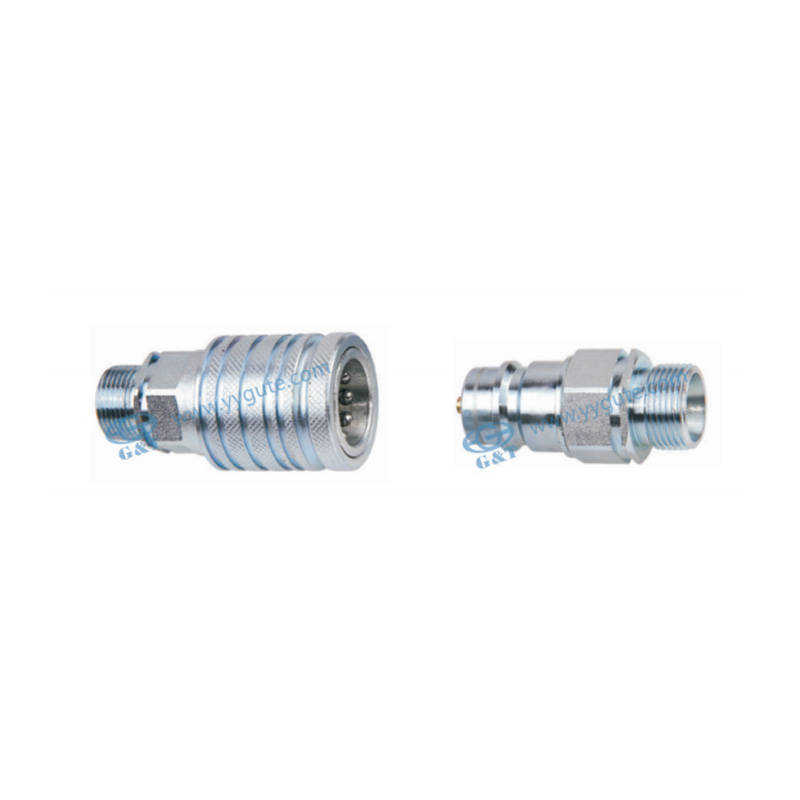Call us
+86-13732136622
+86-15058221666

Design Features: Quick release couplings are engineered to manage dynamic stresses and vibrations through several sophisticated design elements. The locking mechanisms often employ advanced latching systems or bayonet-style connections that securely interlock and resist disengagement. To further mitigate the impact of shock, many couplings integrate shock-absorbing elements such as elastomeric seals or integrated dampers. These components are designed to absorb and dissipate energy from sudden impacts, reducing stress transmitted to the coupling and connected systems. Features such as anti-vibration gaskets or specially engineered O-rings can provide additional stability and reduce the likelihood of connection failure under vibratory conditions.
Material Selection: The performance of quick release couplings under shock and vibration is heavily influenced by the materials used in their construction. High-performance alloys like stainless steel (e.g., 316L for corrosion resistance) or titanium are often chosen for their exceptional strength-to-weight ratios and resistance to deformation. Advanced composite materials, including carbon fiber-reinforced polymers, offer high strength and reduced weight, which are beneficial in vibration-prone environments. Materials are selected not only for their mechanical strength but also for their ability to withstand environmental factors such as temperature fluctuations, chemical exposure, and abrasive conditions. Surface treatments like nitriding or anodizing can further enhance the material’s wear resistance and longevity.
Coupling Type: The suitability of quick release couplings for shock and vibration largely depends on the type of coupling and its intended application. Pneumatic couplings, often used in lower pressure and less shock-intensive applications, may not handle high levels of impact as well as hydraulic couplings. Hydraulic couplings are typically designed to withstand higher pressures and more severe operational conditions, making them more resilient to shock and vibration. Each type of coupling has specific pressure ratings, flow capacities, and environmental tolerances, which should be matched to the application’s demands. Selecting the appropriate coupling type involves evaluating factors such as operating pressure, temperature range, fluid type, and expected vibration levels.
Installation and Alignment: Correct installation and alignment are critical to ensuring the performance of quick release couplings in shock and vibration conditions. Improper alignment can cause uneven load distribution, bring to increased wear and potential coupling failure. Precision in installation helps to prevent misalignment and ensures that the coupling maintains its intended performance characteristics. Regular checks and adjustments during installation and operation can help mitigate issues caused by thermal expansion, mechanical movement, or system shifts.
Application Suitability: In high-vibration or shock-sensitive environments, the selection of quick release couplings must consider the specific operational conditions. Couplings designed for automotive, aerospace, or heavy industrial applications often include features such as vibration-dampening components, shock-resistant materials, and enhanced sealing technologies. Each application may have unique requirements, such as high-frequency vibrations or transient shock loads, which necessitate tailored solutions. Assessing the operational profile and selecting a coupling that is explicitly designed to handle those conditions can significantly impact system reliability and performance.
GT-CT push-pull type hydraulic quick coupling


The GT-B2 copper external thread medium pressure high performance gas-liquid quick connector is a type of quick connector used to connect gas and liqu...
See Details
The GT-A2 closed-type thread locked hydraulic quick connect coupling sets are a type of hydraulic coupling used to quickly and easily connect and disc...
See Details
● Poppet valves avallable to prevent uncoupled leakage. ● Poppet valves open automatically when coupled, within rated working pressure, to keep the f...
See Details
● Poppet valves available to prevent uncoupled leakage. ● Poppet valves open automatically when coupled, within rated working pressure, to keep the f...
See Details
Material: Carbon Steel Plating: Coloured Zinc Temperature Range (Nbr): -20°C+100°C Working Pressure: 70mpa Thread Specification: G3/8, Zg3/8 Applicat...
See Details
Material: Carbon Steel Plating: Trivalent Chromium Temperature Range (Viton): -20℃+180℃ Working Pressure: 100mpa Thread Specification: G1/4 Applica...
See Details
Metal Parking Station For Socket GT-VF Series Quick Couplings.
See Details
The QKD-X MINI Type single-handed and semi-automatic pneumatic quick coupling is a type of air fitting that allows for quick and easy connection and d...
See Details
QKD153 Steel Single disconnect pneumatic quick air fittings are a type of air fitting used to connect and disconnect pneumatic hoses or tubes quickly ...
See Details
QKD 158 industrial-type high-pressure pneumatic quick coupling is a type of air fitting that is designed to handle high-pressure pneumatic applicatio...
See Details
Contact Us